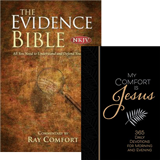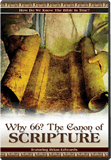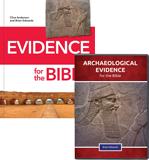Did Peter Write 2 Peter?
Arguing for the authenticity of the most-contested New Testament book
Part of arguing for the authority of Scripture is to show that the current books in the New Testament are really written by an apostle or someone closely associated with them (2 Corinthians 3:6; 2 Thessalonians 2:15, 3:14; cf. Luke 1:1–4).1 Unknown to many Christians is that 2 Peter is one of the most-debated books of the New Testament canon. Critical scholars regard 2 Peter as being forged by a later author pretending to be Peter (pseudonymous = falsely named) in the late first or early second century.2 Some of the reasons critical scholars give for this are
- The style and wording of 2 Peter is distinctly different from that of 1 Peter (for critical scholars this may indicate two different authors).
- Peter is described as “illiterate” (Acts 4:13), and the author of 2 Peter uses Greek philosophical terms.
- There are supposed historical inconsistencies (the reference to Paul’s letter as Scripture—2 Peter 3:16).
- 2 Peter struggled for canonical status in the early church.
Despite the objections from critical scholars, a strong argument can be made for 2 Peter being authored by the Apostle Peter somewhere between AD 64 and 68.4
The suggestion that the author of 2 Peter is not the Apostle Peter means that the text is making a false claim, which is inconsistent with a high view of Scripture (2 Peter 1:21); it is like saying falsehood is inspired. 2 Peter’s emphasis on truth (2 Peter 1:12, 2:2) and warning about false teachers who “will exploit you with false words” (2 Peter 2:3) is hard to reconcile with someone who is writing falsely about who he is. Pseudonymity was not a practice early Christians were fine with as authorship was important for them. The Apostle Paul specifically criticized pseudonymous writings in his name in 2 Thessalonians 2:2 and confirmed his authenticity in 2 Thessalonians 3:17.3 Despite the objections from critical scholars, a strong argument can be made for 2 Peter being authored by the Apostle Peter somewhere between AD 64 and 68.4
The Apostle Peter
The claim of 2 Peter is that it is written by “Simeon Peter,” with the form Simeon being used—Συμεὼν, Symeōn (2 Peter 1:1)—which is used of Peter only in Acts 15:14.5 If the author was pseudonymous, then why not use the form of address in 1 Peter (Πέτρος, Petros, 1 Peter 1:1) or another title used for Peter in the New Testament? The use of the term Symeōn is a mark of authenticity. The terms “Peter” and “apostle” (2 Peter 1:1) further support the letter’s claim to be from Peter himself, an apostle of Jesus Christ.
The authorial claim of the letter goes well beyond the opening line as it makes positive claims to be the person who bears that name and recounts events that took place in Jesus’ life. The author mentions that the Lord Jesus Christ had shown him his death was close at hand (2 Peter 1:14; cf. John 21:15–19); he presents himself as an eyewitness of the transfiguration of Jesus Christ (2 Peter 1:16–18; cf. Mark 9:2–13) and identifies himself as a close associate of the Apostle Paul (2 Peter 3:15; cf. Galatians 1:18, 2:9). The personal nature of these statements makes it difficult to see how a pseudepigraphal author could write such words with any authority. Lastly, the letter claims to be the second one written by Peter (2 Peter 3:1). This claim “does not fit with pseudepigraphy since the second letter does not depend in a clear fashion on 1 Peter.”6
One of the arguments critical scholars use to say that Peter could not have written 2 Peter is that he is described as “illiterate” (agrammatoi) in Acts 4:13.7 However, the appeal to Acts 4:13 to describe Peter as “illiterate” is not compelling. The context of Acts 4:13 makes it clear that it is the scribes (grammateis, Acts 4:5) speaking of Peter (and John) being “uneducated” (agrammatoi) in respect to his not being formally rabbinically trained in the Scriptures and therefore not qualified to teach publicly (cf. John 7:15).8
A further argument critical scholars use against Peter being the author is the question of how a Galilean fisherman could use so many Greek philosophical words and concepts (e.g., “excellence,” aretē, 2 Peter 1:3; “divine nature,” theios physis, 2 Peter 1:4; “hell,” tartarōsas, 2 Peter 2:4). Although people may think there is some validity to this argument, New Testament scholar Thomas Schreiner rightly notes, “We must remind ourselves that we should conceive of Peter as a businessman who engaged in physical labor and commerce. When we add to this the fact that Galilee was influenced by Hellenism and Greek culture, it is not astonishing that he would be familiar with Greek philosophical terms. The terms he used would not require a thorough study of Greek philosophy or classics, nor did Peter use the terms in a technical sense.”9 Peter’s use of Greek philosophical terms suggests he simply used the language of the day to communicate with his readers (just as some evangelists do today).
1 Peter and 2 Peter
Critical scholars argue that, because the grammar and style (especially in Greek) is so strikingly different, it is not possible for 1 Peter and 2 Peter to have been written by the same person. It is true that there is grammatical and stylistic difference between 1 Peter and 2 Peter, but there are several ways to explain this. The difference in style of writing between 1 Peter and 2 Peter may be explained by the use of scribes (cf. Romans 16:22). Peter tells us that he wrote 1 Peter with the help of Silvanus (1 Peter 5:12). Peter may have written one letter himself (2 Peter) and used a scribe for the other (1 Peter) or even for both (although there is no scribe named in 2 Peter).10
It is also important to recognize that there are lots of problems with stylistic objections between 1 Peter and 2 Peter, as they are often subjective and overlook obvious reasons why an author would use different vocabulary and style (i.e., setting, context, and audience). The differences between 1 Peter and 2 Peter reflect the specific pastoral situations in each. For example, 1 Peter is written to encourage believers who are facing suffering for their faith (1 Peter 1:6, 3:14). On the other hand, 2 Peter is written to warn believers about false teachers (2 Peter 2). In 2 Peter, Peter is at a different stage in his life, although only a few years apart from 1 Peter, as he knows that he is near death and so is leaving a farewell address (2 Peter 1:12–15).
Even though there are differences in the style of writing, we should not overlook the many thematic links between 1 Peter and 2 Peter.11
| 1 Peter | Theme | 2 Peter |
|---|---|---|
| 1:10–12 | Inspiration of the Old Testament | 1:19–21 |
| 1:2 | Doctrine of election | 1:10 |
| 1:23 | Doctrine of the new birth | 1:4 |
| 2:11–12 | Need for holiness | 1:5–9 |
| 3:20 | Noah and his family protected | 2:5 |
| 4:2–4 | Immorality and judgment | 2:10–22 |
| 4:7–11 | Exhortation to Christian living | 3:14–18 |
| 4:11 | Doxology | 3:18 |
The parallels between 1 Peter and 2 Peter point to a common author. It is incorrect to assume that because the grammar and style of 1 Peter and 2 Peter are different that the Apostle Peter could not have been the author of 2 Peter.
Historical Inconsistencies?
The parallels between 1 Peter and 2 Peter point to a common author.
Another argument critical scholars use is that 2 Peter could not have been written by Peter because it refers to Paul’s letters (plural) as Scripture (2 Peter 3:15–16) and the New Testament canon had not developed as early as AD 64–68. This argument is based on critical scholars’ view that the canon of the New Testament is an ecclesiastical product, a product of the church, created for the purposes of the church and not something that was natural to first century (early) Christianity. In the minds of critical scholars, the books of the New Testament were not written as canon but became canon of the later church.12 Critical scholars who see the New Testament canon as an artificial development (rather than a natural development) will view evidence through that lens and dismiss any evidence that points to the early origin of the New Testament canon (cf. 1 Timothy 5:18). However, New Testament scholar Michael Kruger has demonstrated that the New Testament canon naturally came about because of early Christianity’s theological beliefs: (1) the eschatological nature of early Christianity;13 (2) the concept of covenant in early Christianity;14 and (3) the role of the apostles in early Christianity.15 The theological beliefs of early Christianity created the foundation for the canon of the New Testament to be built upon; it was not something that came about later and was imposed upon the Christian faith.
In 2 Peter 3:16, Peter speaks of a collection of Paul’s letters (how many is unclear) that were obviously circulating around the churches (cf. Colossians 4:16). Peter even talks as if it is common knowledge that people know who the Apostle Paul is (he does not introduce Paul to his readers) and that his letters are authoritative Scripture as he places them on par with “the other Scriptures” of the Old Testament (2 Peter 3:16).16
In 2 Peter, he asks his readers to submit to “the predictions of the holy prophets and the commandment of the Lord and Savior through your apostles” (2 Peter 3:2). Peter contrasts “prophets” of the Old Covenant and the “apostles” of the New Covenant, showing that he understands them as two equal sources of divine revelation. This would suggest the beginnings of a “bicovenantal canon.”17 Since the “predictions of the holy prophets” is a clear reference to written texts (Old Testament Prophets), it is most probable that the “commandment of the Lord . . . through your apostles” is also a reference to written texts. This understanding is supported by the immediate context, as not only has Peter just referred to an apostolic text—namely 1 Peter (2 Peter 3:1)—but he will also refer to the apostolic writing of Paul (2 Peter 3:16). Since Peter is an apostle (2 Peter 1:1), who has validated his apostolic credentials (2 Peter 1:16–18) and believes Christians should submit to the commandments of the apostles (2 Peter 3:2), then this implies that his writings have the same authority as the Apostle Paul’s.
2 Peter provides important evidence that both Peter’s and Paul’s writings were considered authoritative Scripture by AD 64–68.
Canonical Struggle
“Many other ‘Petrine’ writings were excluded, but the church recognized the legitimacy of 2 Peter.”
It is well noted amongst scholars that of all the books in the New Testament, 2 Peter had the most difficult time of being accepted into the canon. One of the reasons for this is that there were other letters that were forgeries (e.g., The Gospel of Peter, The Acts of Peter, The Apocalypse of Peter) around the second century claiming to be written by Peter. Again, the irony of the claim that 2 Peter is pseudonymous is that some early church fathers objected to its being in the canon because they did not think Peter wrote it. The early church did not accept books that were pseudonymous, as they cared about whether the author was really who he claimed he was. As Schreiner notes, “The church went through a process by which it sifted the authentic from the spurious. When the decision was made, 2 Peter was accepted, but other alleged Petrine writings were rejected. The early church was not inclined, therefore, to include a document just because it had Peter’s name on it. Many other ‘Petrine’ writings were excluded, but the church recognized the legitimacy of 2 Peter. Hence, the acceptance of 2 Peter witnesses to the discrimination of the church, to their conviction that this writing, in contrast to many other alleged Petrine writings, was authentic.”18
The early church father and historian of Christianity, Eusebius (AD 263–339), in his compilation on early church history, tells his readers that although 2 Peter was disputed, it was not unknown but recognized by many (Hist. eccl. 3.25). Irenaeus (AD 130–202), bishop of Lyon, seems to have had access to 2 Peter as the wording of 3:8, “with the Lord one day is as a thousand years, and a thousand years as one day,” is very close to what he wrote (Haer. 5.23.2). Other early church fathers, such as Clement of Alexandria (AD 150–215), also appear to accept 2 Peter as Scripture (see Eusebius Hist. eccl. 6.14.1, 3.25.3).
Eventually the church coalesced around 2 Peter, and it was received as authentic by such figures as Jerome, Athanasius, and Augustine, as well as the councils of Laodicea (c. 360) and Carthage (c. 397).19
Although there were doubts originally, there is no valid reason to doubt today that 2 Peter is a part of the canon of Scripture.
Even though critical scholars have multiple objections to the authenticity of 2 Peter, those objections are found wanting when they are weighed against Scripture and history. When we look at the internal and external evidence concerning 2 Peter, it all points to the Apostle Peter being the author.
Footnotes
- Even though we don’t know definitively who the author of Hebrews was, we do know he was part of the apostolic circle (Hebrews 2:3, 13:23).
- Bart D. Ehrman, Forgery and Counterforgery: The Use of Literary Deceit in Early Christian Polemics (New York: Oxford University Press, 2012), 222–229.
- The irony of this is that critical scholars try to argue 2 Thessalonians is pseudonymous.
- The traditional authorship of 2 Peter has been defended. See Michael Green, 2 Peter and Jude, Tyndale New Testament Commentaries, Revised Edition (Leicester, England: Inter-Varsity Press, 1987), 13–39; Michael J. Kruger, “The Authenticity of 2 Peter,” JETS 42, no. 4 (December 1999): 645–671; Thomas R. Schreiner, 1, 2 Peter, Jude: The New American Commentary (Nashville, Tennessee: B&H Publishing Group, 2003), 255–276.
- The semitic term Symeōn indicates a Jewish person is being spoken of (cf. Luke 2:25, 34, 3:30).
- Schreiner, 1, 2 Peter, Jude, 262.
- Critical New Testament scholar Bart Ehrman states, “It should come as no surprise that Peter could not write Greek (or Aramaic, for that matter). As it turns out, there is New Testament evidence about Peter’s education level. According to Acts 4:13, both Peter and his companion John, also a fisherman, were agrammatoi, a Greek word that literally means ‘unlettered,’ that is, ‘illiterate’” (Bart Ehrman, “Could Peter Have ‘Written’ 1 and 2 Peter Some Other Way?” November 30, 2018, https://ehrmanblog.org/could-peter-have-written-1-and-2-peter-some-other-way/).
- New Testament scholar Michael Kruger points out, “The context of this passage suggests that the Greek term agrammatoi is best translated not as ‘illiterate’ but simply as ‘uneducated’ – that is, in respect to formal rabbinical training. Peter and John were before the Jewish council, composed of formally trained priests and scribes (Acts 4:5), and the court was impressed that these two men could engage so forcefully in theological debates even though they were just commoners. When the reader notes that Acts 4:5 uses the term grammateis (‘scribes’) to describe the Jewish council, it is clear that there is a contrast being made when the council describes Peter and John with a term that is nearly its opposite: agrammatoi. The contrast is not about who is literate or illiterate in the formal sense of the terms, but about who has rabbinic training in the Scriptures and who is a mere layman” (Andreas Köstenberger and Michael J. Kruger, The Heresy of Orthodoxy [Wheaton, Illinois: Crossway, 2010], 185).
- Schreiner, 1, 2 Peter, Jude, 265.
- Papias, the early church bishop of Hierapolis in Phrygia, in the early second century (101–108), wrote that Mark relied on the Apostle Peter for his information to write the Gospel of Mark (cf. Acts 12:12–17, 15:37; 1 Peter 5:13). It may be that 1 Peter is so well written because Silvanus was more professional at writing than Peter. It would seem that Peter is not a writer but an orator (Acts 2:14–39, 10:34–48). In 2 Peter, where he speaks of his departure (2 Peter 1:13–15), Peter personalizes the letter, and the grammar reflects someone who is not skilled at writing.
- Simon J. Kistemaker, “2 Peter,” in A Biblical-Theological Introduction to the New Testament: The Gospel Realized, ed. Michael J. Kruger (Wheaton, Illinois: Crossway, 2016), 473.
- Critical scholars disagree on when the origins of the New Testament canon started; suggestions are given from the time of Irenaeus (AD 130–202) to the pagan Emperor Constantine (emperor from AD 306 to 337).
- Kruger states, “When we speak of early Christianity as ‘eschatological’ we are not speaking here simply of the Christian belief that Jesus would one day return to judge the world; rather, we are speaking of the belief, that in some sense, Israel’s awaited eschatological redemption had occurred in the person and work of Jesus of Nazareth. . . . How do such eschatological beliefs about Jesus fulfilling the Old Testament promises to Israel affect the development of a new canon of Scripture? . . . First, the fact that Second Temple Jews regarded the Old Testament story as incomplete and in need of a proper conclusion has significant implications for the production of a new corpus of biblical books. . . . Second, the Old Testament writings themselves—from which the earliest Christians have drawn these promises—indicate that God often brings new Word-revelation after he acts to redeem his people [Exodus 20:2]. . . . Third, when the Old Testament refers to the future eschatological age of redemption, it explicitly states that this new era will be accompanied by a new divine message [Deuteronomy 18:18; Isaiah 11:1, 4, 61:1–2]” (Michael J. Kruger, The Question of Canon: Challenging the status quo in the New Testament debate [Nottingham, England: Apollos, 2013], 50–55).
- Kruger states, “If, as we have just seen, early Christianity was distinctively covenantal in its orientation, then what impact does this have on the development of the canon? The answer lies in the very close connection between covenants and written texts [Exodus 24:7]. . . . if they [the New Testament writers] believed that through Jesus Christ a new covenant had been inaugurated with Israel (Jer 31:31), it would have been entirely natural for them to expect new written documents to testify to the terms of that covenant” (Kruger, The Question of Canon, 59–62).
- Kruger states, “If apostles were viewed as the mouthpiece of Christ [Matthew 10:14; Mark 3:14–15], and it was believed that they wrote down that apostolic message in books [2 Thessalonians 2:15, 3:14; Jude 3; Revelation 1:11], then those books would be received as the very words of Christ himself. Such writings would not have to wait until second-, third- or fourth-century ecclesiastical decisions to be viewed as authoritative—instead they would be viewed as authoritative from almost the very start. For this reason, a written New Testament was not something the church formally ‘decided’ to have at some later date, but was instead the natural outworking of the early church’s view of the function of the apostles” (Kruger, The Question of Canon, 70).
- The Greek word for “other” (loipos) functions as an adjective and refers to “other” of the same kind (cf. Matthew 25:11; Acts 2:37; 2 Corinthians 12:13; Galatians 2:13). In other words, Paul’s letters are in the same category as the Old Testament Scriptures. See Schreiner, 1, 2 Peter, Jude, 397–398.
- Kruger, The Question of Canon, 150.
- Schreiner, 1, 2 Peter, Jude, 264.
- Kistemaker, “2 Peter,” 475.
Recommended Resources

Answers in Genesis is an apologetics ministry, dedicated to helping Christians defend their faith and proclaim the good news of Jesus Christ.
- Customer Service 800.778.3390
- © 2024 Answers in Genesis







